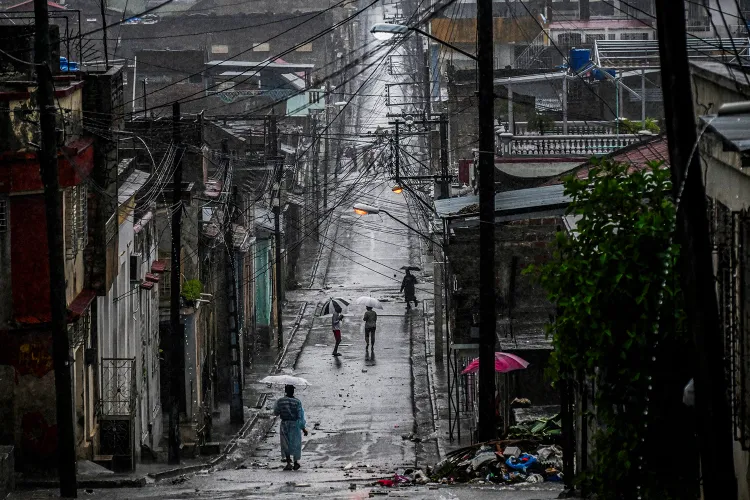Hurricane Melissa Slams Cuba with 115 MPH Winds as Jamaica Declares a National Disaster Amid Record Flooding and Widespread Power Outages
Hurricane Melissa made landfall early Wednesday morning, carving a trail of destruction across eastern Cuba and battering nearby Jamaica with relentless rain, flash floods, and hurricane-force winds. The powerful storm, classified as a Category 3 hurricane, reached sustained wind speeds of 115 mph, making it one of the strongest tropical systems to strike the Caribbean this year.

The National Hurricane Center (NHC) confirmed in its latest advisory that Melissa was moving northwest at around 12 mph, bringing heavy rain bands that have already caused rivers to overflow and coastal areas to flood. Streets in Santiago de Cuba were submerged under several feet of water, while power lines and trees collapsed under the storm’s force. Local officials reported widespread blackouts across multiple provinces, with emergency crews working through the night to restore communication lines and provide aid.
Jamaica, though not at the hurricane’s direct center, faced significant devastation as outer rain bands triggered flash floods and landslides across the island. Prime Minister Andrew Holness declared the country a national “disaster area” on Tuesday night, calling for calm and urging citizens to prioritize safety over property. “This is a difficult time for our nation,” Holness said in a statement. “Our first priority is saving lives and ensuring that communities cut off by flooding are reached as soon as conditions allow.”

Residents in both countries described scenes of chaos and heartbreak. In Havana, families sought refuge in government shelters as waves pounded the coastline and winds tore through rooftops. Meanwhile, in the Jamaican parishes of St. Mary and Portland, residents waded through knee-deep water, clutching what few belongings they could carry. Dozens of roads were blocked by fallen trees, and several bridges were reported damaged or impassable.
Meteorologists say Hurricane Melissa’s strength was fueled by unusually warm Caribbean waters — a concerning trend in what experts describe as an increasingly volatile hurricane season. The storm’s rapid intensification took forecasters by surprise, growing from a tropical storm to a major hurricane in less than 48 hours. The NHC warned that the system could bring up to 15 inches of rain in some regions, increasing the risk of flash flooding and mudslides.

Local emergency agencies across the Caribbean have been mobilized, with Cuba’s Civil Defense issuing mandatory evacuations in flood-prone areas. Over 20,000 people were moved to shelters ahead of the storm, while hospitals and schools were converted into emergency relief centers. In Jamaica, rescue operations are underway, with helicopters deployed to reach remote areas cut off by rising waters.
As the storm continues its path toward the Florida Straits, U.S. forecasters are closely monitoring its trajectory. While Melissa is expected to weaken slightly over the next 24 hours, the NHC warned that dangerous surf conditions and rip currents will likely affect southern Florida and parts of the Bahamas by Thursday.

Despite the widespread destruction, the resilience of Caribbean communities remains unshaken. Videos circulating on social media show neighbors helping one another clear debris and deliver food to families in need. “We’ve been through storms before,” said a resident in Kingston. “We rebuild, we help each other, and we carry on.”
As the skies slowly clear, the full scale of the damage is only beginning to emerge. Governments across the region are preparing for days, if not weeks, of recovery work — from repairing homes and roads to restoring power and clean water access. For many, Hurricane Melissa is a stark reminder of the growing threat posed by extreme weather — and the strength of those who stand together in its aftermath.



